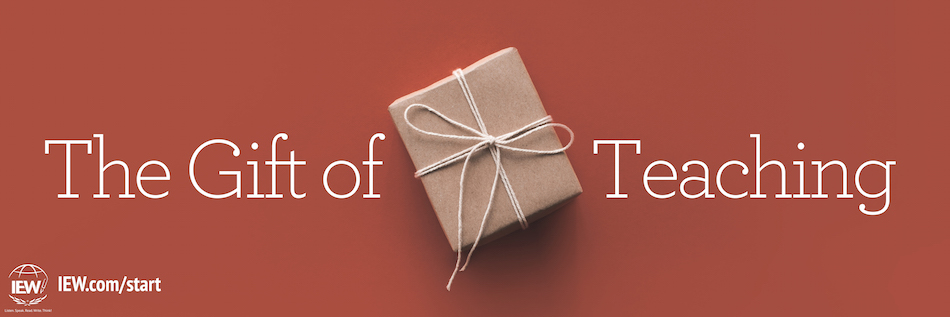
“In addition to using the right teaching method and having patience while children mature, we must also have the right attitude in coaching our students.” – Andrew Pudewa
As the Christmas season settles itself upon the whole of Western civilization, perhaps it is fitting for us to wrap our chilled hands around a warm mug and contemplate the value of what we do when we teach. What is teaching, after all? Is it merely an act of a social machine, intent on turning out eighteen-year-old human products? Is it a right for students, to be demanded and given at the will of children? Is it a tool of marketing and social engineering, to be shaped by special interests and would-be employers of the future? Or is it something else entirely at its core? As we ponder this conundrum, consider the following: In order to teach, teachers must have something timely to teach, envision how their efforts will improve their student, and have the willingness to see the arduous process through.
A teacher must teach the right thing at the right time. This often comes in terms of knowledge, comprehension, or application. Knowledge, facts and figures, makes comprehension possible. Comprehension opens the door for a student to make appropriate applications. As they coach their charges, wise teachers address those things that students can control, like making sure that they’ve done everything on their Structure and Style™ checklist and making sure that they have the knowledge they need to do each part of the process. Once students know what they need to do, teachers must be patient enough to hold back their comments on things that are less easily explained, such as what facts a student chooses for his Unit 4 assignment. Even though the teacher is convinced that a better choice exists, if she is patient enough to allow the student room to practice and grow in his comprehension prior to requiring him to have fully mature application, the student will benefit. So, teaching requires the teacher to impart to her students what they need when they need it.
Teaching is an investment in the student’s development, and great teachers use their time and energy for long-term results. Looking far down the road of the future to an as-yet-unrealized reality exemplifies the goal of the teacher: an improvement in her student. The very act of teaching communicates an intentional faith that another person has the value and capacity to learn, grow, and improve from where he is now. This is grace and love at its finest in humanity: to look at a person not as he is, but as he will become, and to act accordingly.
Because teachers must have a high level of care for their students, teaching requires instructors to share something of themselves over the long haul. As such, teaching is selfless. Caring teachers have diligence enough to help, even when doing so is inconvenient. Great teachers have humility enough to be willing to communicate the same things over and over again with patience and kindness. Ideally and courageously, teachers correct and hold students’ work to clearly communicated standards so that learners know what is expected of them. Having tenacity enough to persevere, teachers send work that is incomplete back to the student over and over again until he gets it right. The best teachers even have the humility to admit to the student when they haven’t been as patient as they ought to be. All of this is selfless, and all of this requires a teacher to make a choice to continue on or to give up.
Great teachers impart to the student what he needs when he needs it. They share patient, caring instruction for the student’s ultimate benefit. They make the selfless choice to continue even when the road is bumpy and winding. Having something to share, doing what is best for the recipient, and willingly sacrificing for him are all elements of perhaps one of the greatest themes of the Christmas season: giving.
To teach is to give a gift.
|
Nathan King, the customer marketing manager for IEW, grew up as the son of a pastor in Wichita, Kansas. Following his graduation from Manhattan Christian College and Kansas State University with a degree in secondary education in history, he worked for thirteen years as a youth pastor in his hometown. Since he began working for IEW, Nathan has enjoyed both the marketing and customer service sides of his position. Nathan and his wife of thirteen years, Melissa, homeschool their four children, but it is his amazing wife that does the lion’s share of this vital mission! |

